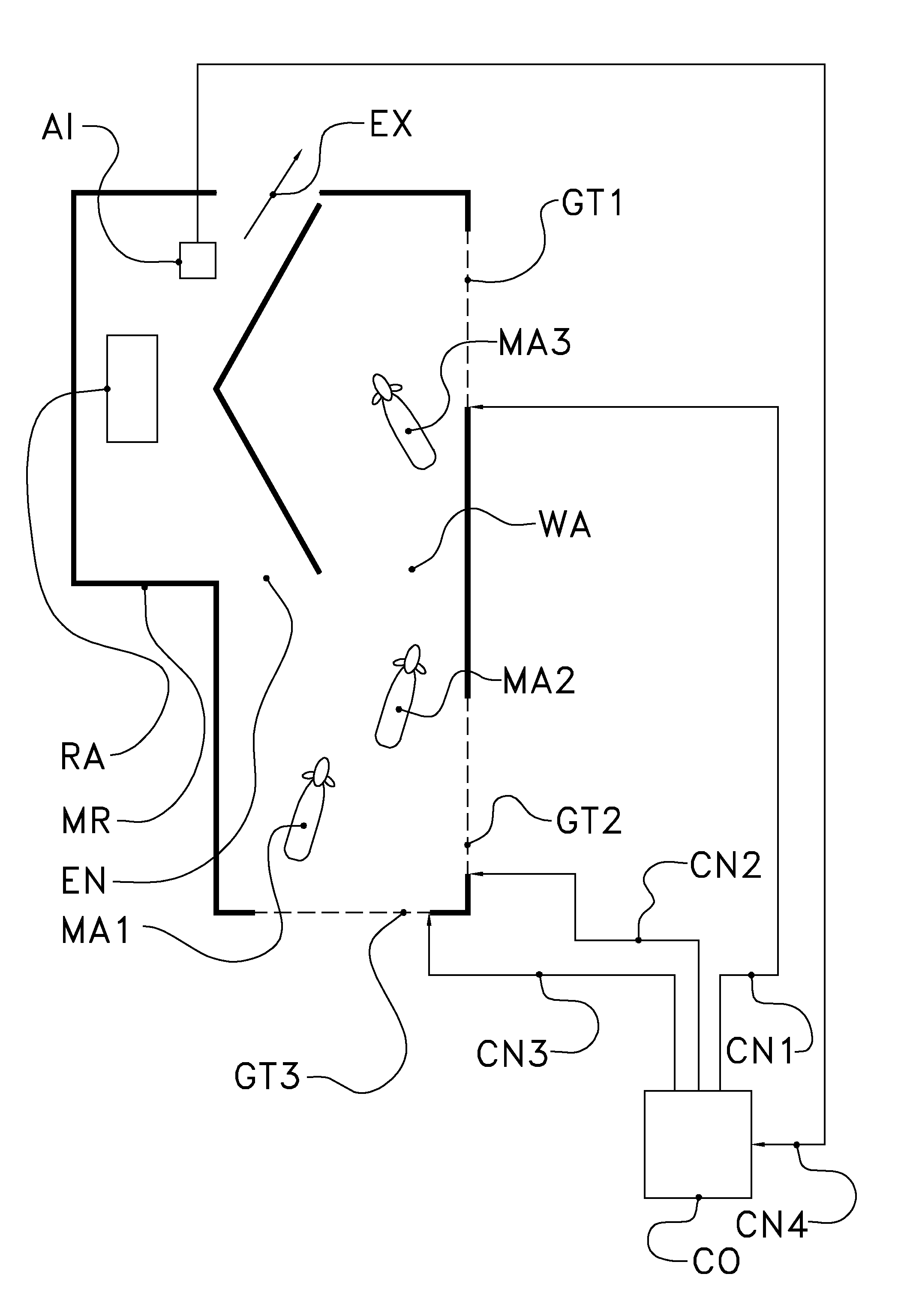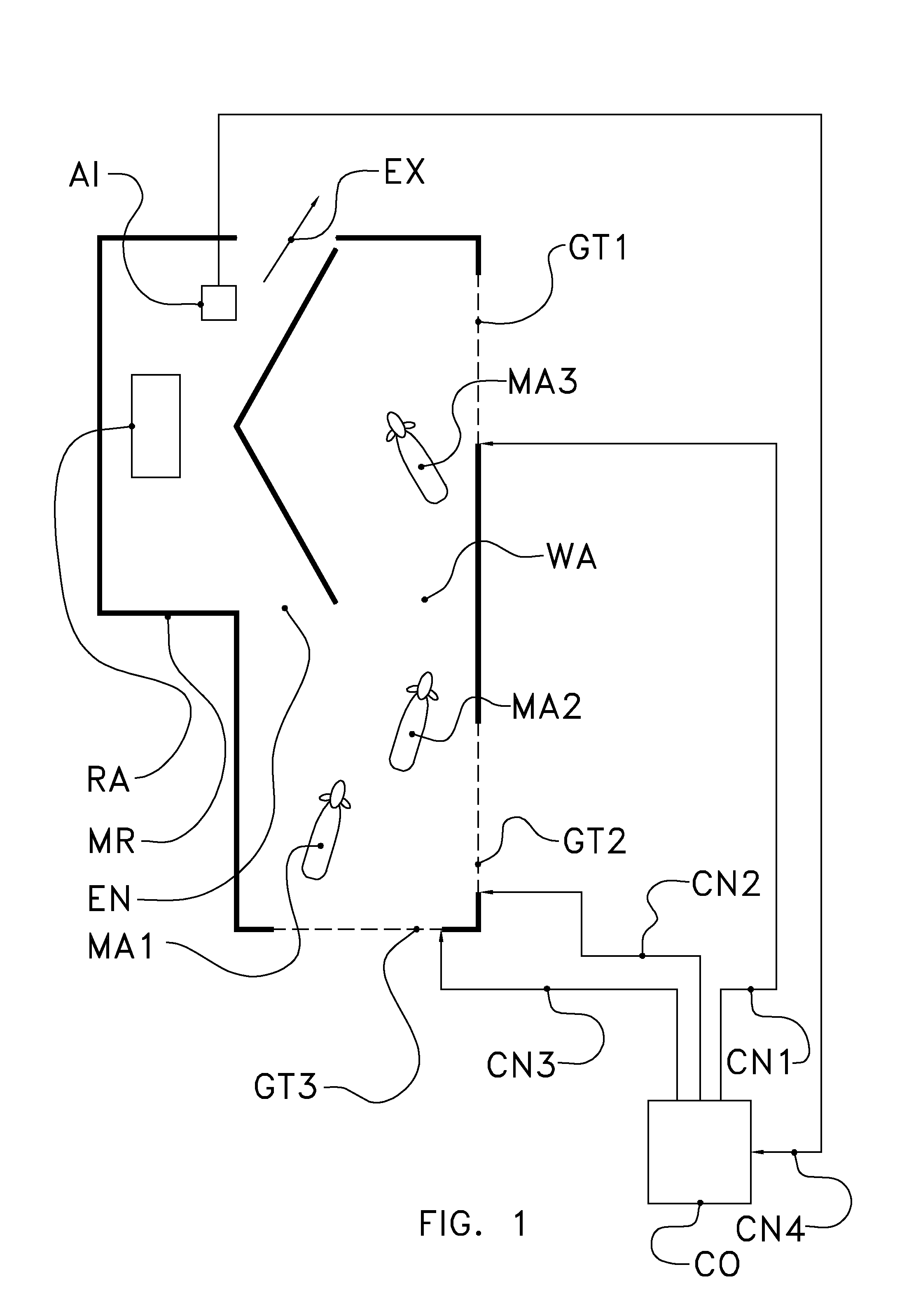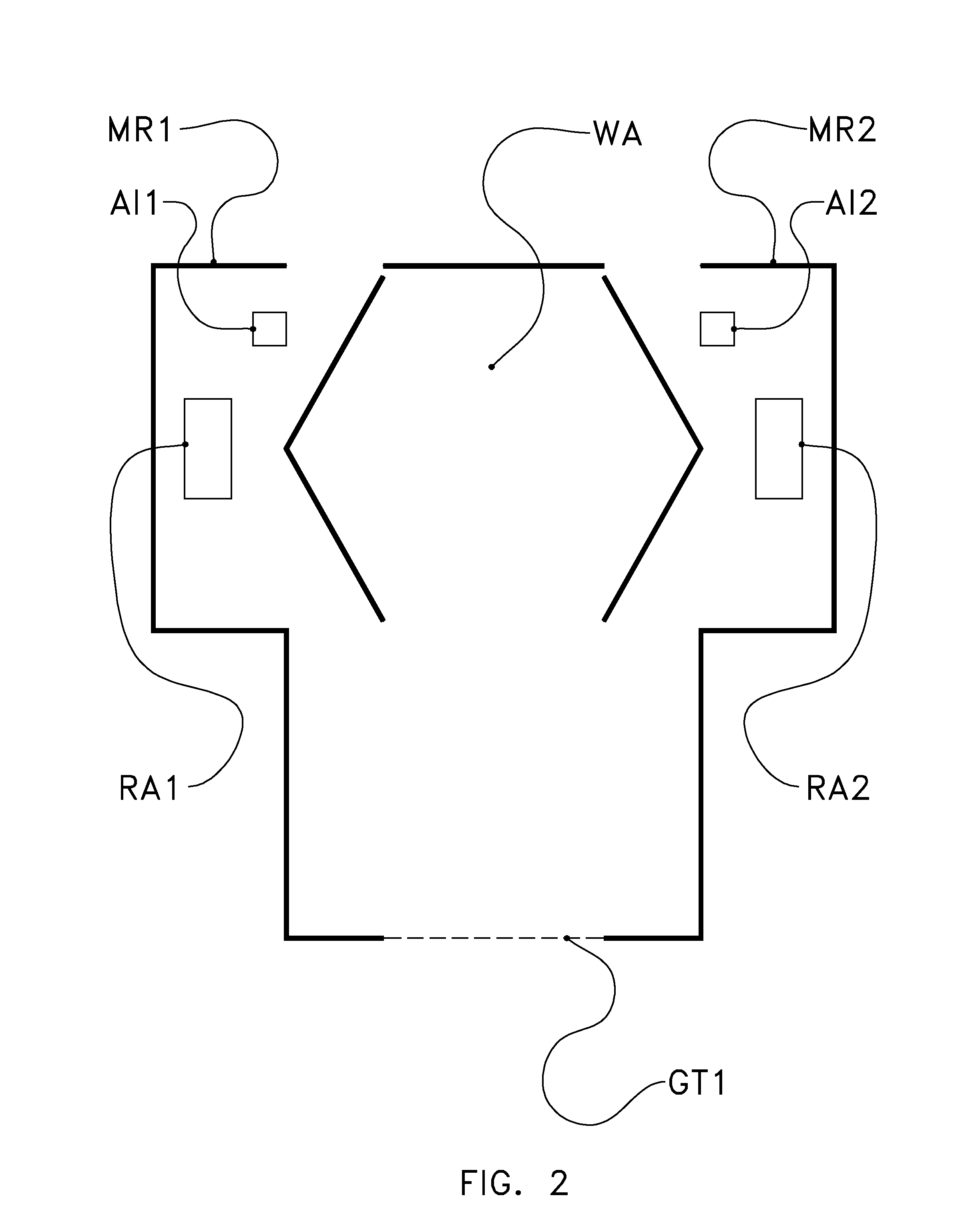Method of and implement for milking dairy animals
a technology for dairy animals and implements, applied in dairy products, animal housing, animal husbandry, etc., can solve the problems of time-consuming and inconvenient processing of animals in such a voluntary milking environmen
- Summary
- Abstract
- Description
- Claims
- Application Information
AI Technical Summary
Benefits of technology
Problems solved by technology
Method used
Image
Examples
Embodiment Construction
[0023]The following is a description of certain embodiments of the invention, given by way of example only and with reference to the drawings. Referring to FIG. 1 there is shown diagrammatically a milking robot MR which is provided with a robot arm disposed thereon for milking the cow. The robot is provided with an entrance EN and an exit EX, through which the animal can enter the milking robot, and leave the milking robot, respectively. The exit EX may be provided with a gate arrangement to control movement of an animal leaving the milking robot MR. There is provided a waiting area WA from which access can be gained to the entrance EN of the milking robot MR. The entrance EN may also be provided with an access gate arrangement (not shown) or the like to allow or prevent access from the waiting area WA to the milking robot MR.
[0024]In this example, there are provided three access devices, namely GT1, GT2, GT3, so that access to the waiting area WA can be provided. In the waiting are...
PUM
 Login to View More
Login to View More Abstract
Description
Claims
Application Information
 Login to View More
Login to View More - R&D
- Intellectual Property
- Life Sciences
- Materials
- Tech Scout
- Unparalleled Data Quality
- Higher Quality Content
- 60% Fewer Hallucinations
Browse by: Latest US Patents, China's latest patents, Technical Efficacy Thesaurus, Application Domain, Technology Topic, Popular Technical Reports.
© 2025 PatSnap. All rights reserved.Legal|Privacy policy|Modern Slavery Act Transparency Statement|Sitemap|About US| Contact US: help@patsnap.com



